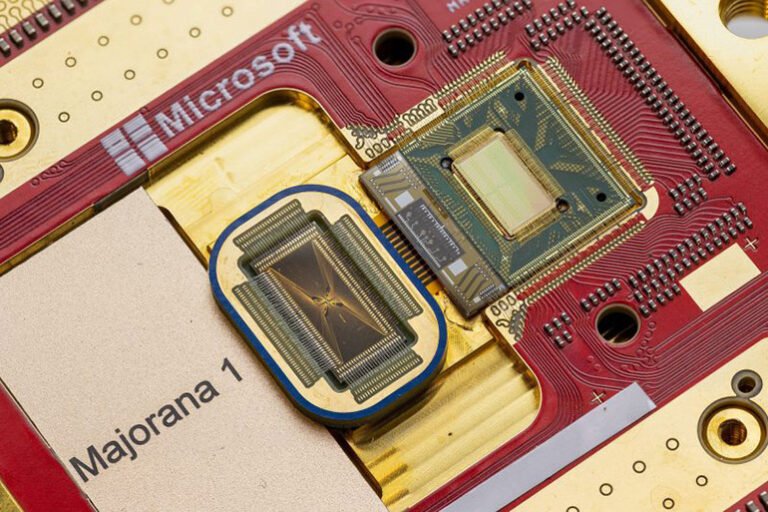The tech industry is buzzing with excitement as Microsoft unveils Majorana 1, a groundbreaking quantum processor that could redefine the future of computing. At Solution Wing, we stay ahead of emerging technologies, and Majorana 1 is one of the most significant advancements in recent years.
But what exactly is Majorana 1, and why is it such a big deal? Let’s break it down in simple terms, explore how it works, and understand its potential impact on industries worldwide.
Understanding Quantum Computing
Before diving into Majorana 1, it’s important to understand how quantum computing differs from traditional computing
Traditional Computers
- Use bits (0s and 1s) to store and process data.
- Work in a linear, step-by-step manner.
- Are powerful, but struggle with complex problems like drug discovery, cryptography, and large-scale AI modeling.
Quantum Computers
- Use qubits, which can exist in both 0 and 1 simultaneously (a property called superposition).
- Can perform multiple calculations at once, making them exponentially faster for certain tasks.
- Are incredibly powerful, but today’s quantum computers face stability issues, limiting their practical use.

What Makes Microsoft’s Majorana 1 Special?
Quantum computers today struggle with noise and errors, making large-scale quantum computing nearly impossible. Microsoft’s Majorana 1 is different because it introduces a new type of qubit the topological qubit.
What Are Topological Qubits?
Unlike regular qubits, which are sensitive to their environment and prone to errors, topological qubits use a unique structure that naturally resists disturbances.
- More Stable: Errors occur less frequently, making computations more reliable.
- Scalable: Designed to support millions of qubits, enabling practical quantum applications.
- Compact & Efficient: Fits into a palm-sized chip and integrates with Microsoft’s cloud platform, Azure Quantum.
How Does Majorana 1 Work?
Microsoft achieved this breakthrough using exotic materials like indium arsenide and aluminum, which create a phenomenon known as topological superconductivity. This allows the processor to use Majorana zero modes, a special quantum state predicted by physicist Ettore Majorana in 1937. In simpler terms, Majorana 1 can process quantum information in a way that is naturally resistant to errors, something traditional quantum computers struggle with.
Why Is This Important? The Real-World Impact
Majorana 1 isn’t just a theoretical advancement—it has the potential to transform multiple industries by solving complex problems beyond the capabilities of today’s computers.
Artificial Intelligence & Machine Learning
- Train AI models faster and more efficiently.
- Solve AI challenges that require massive amounts of computation.
- Enhance natural language processing, image recognition, and data analysis.
Cybersecurity & Encryption
- Post-quantum cryptography will become essential to secure data.
- Quantum computers can break current encryption, but Majorana 1 can also help develop new, quantum-safe encryption methods.
Pharmaceuticals & Drug Discovery
- Simulate molecular interactions at an atomic level.
- Discover new drugs faster by testing countless combinations.
- Help scientists fight diseases like cancer and Alzheimer’s more efficiently.
The Road Ahead: What’s Next for Quantum Computing?
Microsoft’s *Majorana 1* is a massive step forward, but we are still in the *early stages of practical quantum computing*. The next milestones include:
- Scaling to 1 million+ qubits to handle real-world applications.
- Seamless integration with cloud computing (Azure Quantum) to make quantum power available to businesses.
- Developing quantum-resistant encryption to secure digital data.
Final Thoughts
At Solution Wing, we are always looking at the next big thing in technology, and quantum computing is one of the most exciting frontiers. Microsoft’s Majorana 1 isn’t just a research project it’s a sign that practical quantum applications are getting closer.
Companies that prepare for quantum advancements today will be the leaders of tomorrow. As we step into the quantum era, businesses need to start exploring how this technology can impact their industries.
